February 2014
Issue Twenty Seven
|
|
If you're a fan of Wilson's Garden Center, be sure to make your Vote count for the Consumers' Choice Award!
|
|
Spring
Sneak Peak
March
20, 21, & 22
Spring starts Friday, March 20th, and we can't wait for you to see what's new at Wilson's this year! Please Join us during this fun-filled weekend.
Local Artisans & Crafters will be selling baked goods and craft items each day from 11-3.
Sign Up For One Of Our Fun Workshops! (See workshops below. Please register early. Payment due at time of registration)
Enjoy Free Refreshments and sample tasty treats as you browse!
Great Door Prizes each day
Free Gift to the first 50 people each day! |
|
Start Your Own Home Orchard
|
|
Fri., March 20
11 a.m.
FREE
Limit of 15 Guests
A quick and easy way to learn the basics about starting your own orchard or fruit patch.
|
|
Fri., March 20
1 p.m.
$10 plus cost of seeds
Limit of 15 Guests
Fresh veggies are where it's at! Start a vegetable garden from seed. A planting tray and soil are provided. Buy whatever seed you desire.
|
|
Fri., March 20
3 p.m.
$39.99
Limit of 15 guests
Create your own spring themed miniature garden. If you desire you can purchase additional items to change your mini garden with the seasons.
|
|
Learn To Landscape Your Home
|
|
Sat., March 21
1 p.m.
Sun., March 22
11 a.m.
Free
Limit of 15 guests each class
Learn some landscaping basics and find out what plants might be perfect for your situation. We will answer your landscaping questions and give you some tips and ideas to succeed.
* If you need one-on-one attention, please schedule a free quick sketch with our nursery staff on a different day.
|
|
Sat., March 21
1 p.m.
$5 plus cost of plants
Limit of 15 Guests
Bring your own boot -or bow-or purse-or shoe-or any container and re-purpose it into a unique planter. Or purchase a container at Wilson's to fill with an assortment of easy-care succulents. Cost includes soil. Your choice of plants additional cost. |
|
Sat., March 21
3 p.m.
$49.99
Limit of 15 Guests
Create and take home an elegant spring container with a hurricane glass in the center.
|
|
Mommy & Me Moss Hanging Basket
|
|
Sun., March 22
1 p.m.
$49.99
Limit of 15 guests
Come by yourself, or bring a child or grandchild to help plant a beautiful 12 inch moss hanging basket. We will nurture you basket in the greenhouse until it's ready to go outside, and you can monitor its growth via
|
|
Sun., March 22
3 p.m.
$24.99
Limit of 15 Guests
Plant a windowsill herb garden, plus take home some recipes to enjoy with those herbs when they're read to harvest. |
|
Primula, Party Girl 'Valentines Day'
This fun and frilly Primula is great as a gift and makes a great table top centerpiece.
Blooms look like miniature roses and have a yellow rim that makes the flower pop.
NOW AVAILABLE!
|
|
Wilson's Garden Center
10923 Lambs Ln.
Newark, Ohio. 43055
740-763-2873
740-763-2874 (Fax)
office@great-gardeners.com
|
|
February Hours:
Monday - Saturday
9 am - 5 pm
Closed Sunday
March Hours:
Monday - Saturday
9 am - 6 pm
Sunday
11 am - 6 pm
|
|
We are a family owned and operated garden center specializing in plants that thrive in Central Ohio
For more information about our store please
Visit Our Website |
|
|
Good Afternoon Great-Gardeners,
Old man winter doesn't look like it is going away any time soon, but don't let that get you down. There are only 22 days left until spring.
We did hit some record cold temperatures for February so I would not be surprised if some plants suffer some damage from this winter. We won't know for sure,though, until later on.
I have been neglect in my e-newsletter duties due to the death of two more of my grandparents. I will miss them greatly, but I know they are always with me. God willing, my remaining Grandpa will live for a very long time.
We had to travel to Florida for my Grandma's funeral. While we were traveling I was noticing that the Redbuds down there were blooming. From what I can tel,l we look to be about a month to a month and a half behind them in bloom time. They actually had a hard freeze while we were down and it was only 54 degrees on a couple of days. It was funny seeing all the Floridians bundled in winter coats while were walking around without coats and in T-shirts.
I had a request from a guest right before I left wanting to know about Butterfly Gardening. So in this issue I will talk about Butterfly Gardening, Upcoming Events, and Your Questions.
If you have any questions, comments or suggestions, hit reply. I would love to hear from you. As always, have a great-gardening day.
Sincerely,
Holly |
|
6 Most Common Butterflies In Ohio
|
|
Viceroy:
Nectar Plants: Asters, Joe-Pye Weed, Goldenrod, Phlox
Larvae Plants: Willow, Poplars, Black Cherry
To tell the difference between a Monarch and Viceroy look for a black line crossing the back hindwing. If it has a line, it is a Viceroy, not a Monarch. |
|
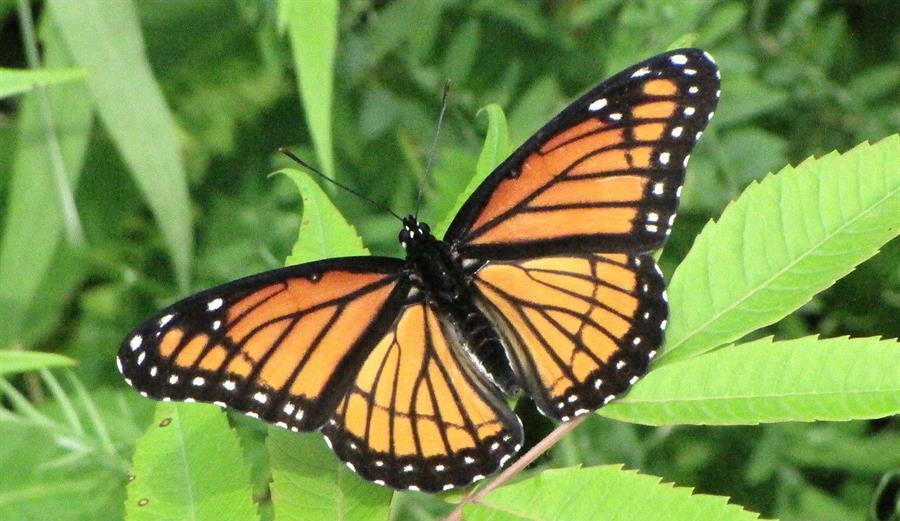
|
|

|
"Viceroy "
Photo by
D. Gordon E. Robertson
|
|
|
|
|
Painted Lady:
Nectar Plants: Joe-Pye Weed, Liatris (Blazing Star), Bee Balm, Goldenrod, Phlox, Asters
Larvae Plants: Pearly Everlasting
Painted ladies are one of the most widely distributed species of butterfly. They can be found on every continent in the world except Antarctica and Australia.
|
|
Spice Bush Swallowtail:
Nectar Plants: Milkweed, Butterfly Weed, Purple Coneflower, Joe-Pye Weed
Larvae Plants:
Spicebush, Sassafras
Also known as the Green-Clouded butterfly. Unlike other swallowtail butterflies, Spicebushes fly low to the ground instead of at great heights. |
|
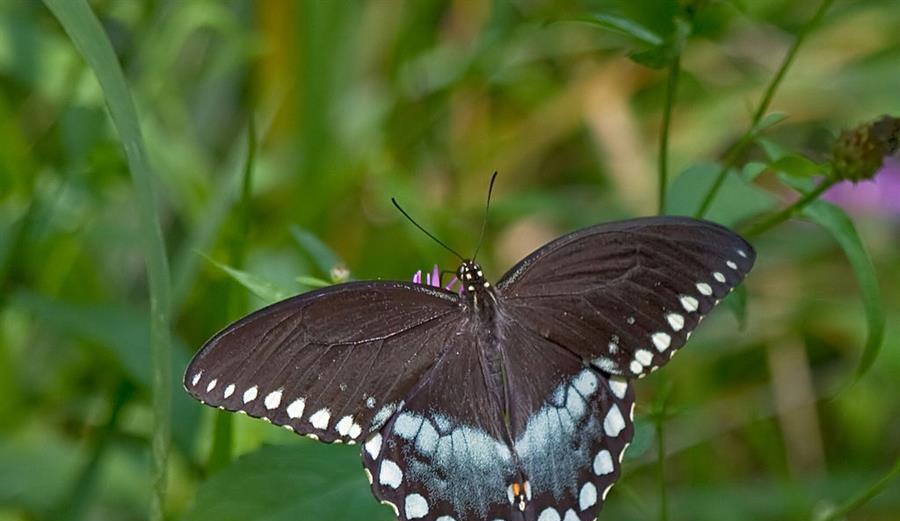
|
|

|
"Spicebush Swallowtail Butterfly"
Photo by Greg Hume
|
|
|
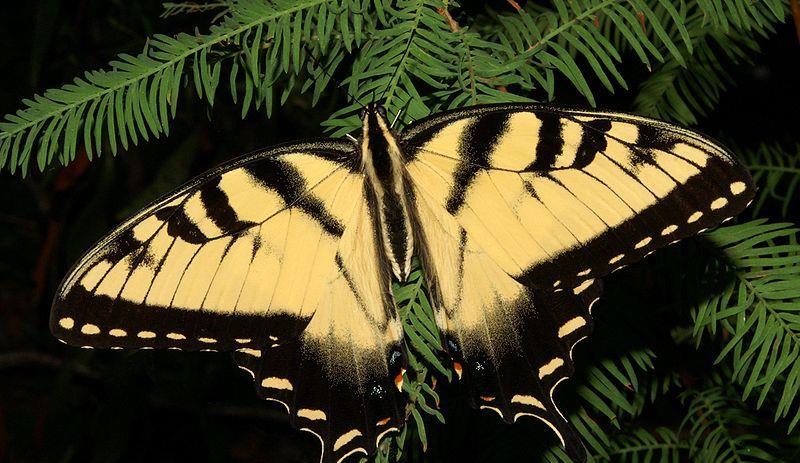
|
|

|
"Eastern Tiger Swallow Tail Male"
Photo By Kenneth Dwain Harrelson
|
|
|
Eastern Tiger Swallowtail:
Nectar Plants: Butterfly Weed, Bee Balm, Phlox, Milkweed, Liatris (Blazing Star)
Larvae Plants: Black Cherry, Tulip Tree, Ash, Spicebush
The first known drawing of a North American butterfly was that of an Eastern tiger swallowtail drawn by John White in 1587. |
|
Eastern Black Swallowtail:
Nectar Plants: Milkweed, Butterfly Weed, Phlox
Larvae Plants: Parsley, Carrot, Celery and dill.
The state butterfly of Oklahoma. Some people consider the caterpillars of this butterfly to be a pest, since they eat parsley, carrots, and other garden plants. |
|
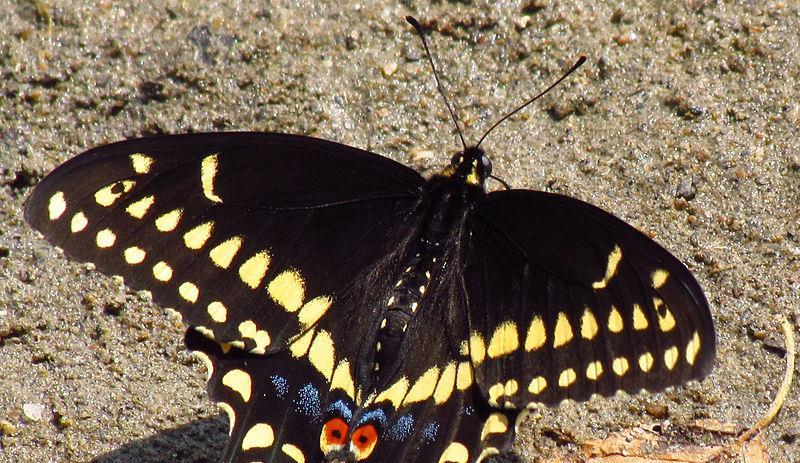
|
|

|
"Eastern Black Swallowtail Male"
Photo By D. Gordon E. Robertson
|
|
|
|
|
Monarch:
Nectar Plants: Milkweed, Butterfly Weed, Joe-Pye Weed, Goldenrod, Asters, Liatris (Blazing Star)
Larvae Plants: Milkweed
Monarch butterflies follow the same migration patterns every year. During migration, huge numbers of butterflies can be seen gathered together. |
|
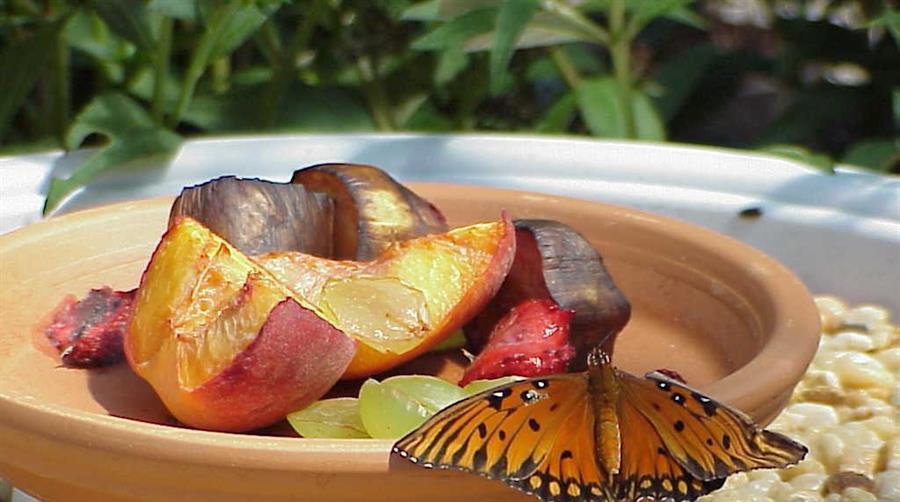
|
|

|
|
"Gulf Frittary" - Not Found In Ohio
|
|
|
|
A successful butterfly garden is one that contains all components that butterflies need for food, light, shelter, and breeding. Although you don’t have to have a huge garden to catch the attention of passing butterflies, if you provide a hospitable environment you’ll increase your chances greatly. It should be stable and predictable, so that over time, the needs of the butterflies are met consistently. A natural setting for butterflies is both attractive and essential to their well-being. Understanding the nature of butterflies and having the knowledge of their life stages will help you plan your garden.
Both nectar and larval plants should be supplied for food.
Nectar plants will support the adult butterfly. A variety of flowering shrubs, perennials, annuals and herbs will ensure plenty of blooms to last throughout the season. The larval plants will sustain the actively growing caterpillars. Caterpillars need to munch on the foliage, so expect to see a few ”tattered” leaves. Many caterpillars have specific tastes, so those plants that suit their fancy can be tucked away in the back corner of the garden, where they may not be as noticeable. Don’t worry about being overrun with caterpillars. Although an adult butterfly may lay hundreds of eggs, only a few usually survive to adulthood. By offering food for both stages of the butterfly’s life, you’ll have a better chance of keeping them around. As a rule, pesticides and herbicides should never be used in or near a butterfly garden.
Ensure that your garden gets plenty of sunshine.
Butterflies are cold blooded, and usually do not fly until the temperature is at least 60 degrees. You’ll want to ensure that your garden gets plenty of sunshine, as butterflies only fly well when their wings are warm and dry. Although butterflies will rest and hibernate in wooded areas (in suburbia this would include the undersides of well-camouflaged shrubs), include a flat rocky area in the sun, which will make a good resting spot where they can prepare for a day of flight and feeding.
Incorporate plants for resting.
Butterflies need a place to rest and hibernate. Trees and shrubs will provide necessary shelter from predators and give your butterflies a place to rest on a busy day of flying in the sweltering sun. Butterflies will also roost during cold, cloudy, or rainy weather. If your garden happens to be in a fairly windy spot, dense shrubs also offer windbreak protection. The wind can wreak havoc on the delicate wings of the butterfly.
Enjoy your butterfly oasis.
Butterfly gardens are a great enjoyment, whether it is by snapping beautiful photos, or sharing your gardens with friends and family. You are also doing your part in conserving the environment. Butterflies are important plant pollinators, and establishing or maintaining their habitat preserves a piece of the ecological system. Remember that your butterfly garden can be as small as a window box, or as large as a field of wildflowers. Establishing a large butterfly area may take more than one season. Be patient! You will be rewarded for your efforts! |
|
It Feels Like Florida In The Green House!
New Shipment Of House Plants
Just Arrived!
|
|
We are now accepting applications for our 2015 season:
Apply in person: Monday – Saturday: 9 am – 4 pm
We are seeking individuals with a passion for serving our guests to join our award winning garden center/nursery.
Please park in the front parking lot when coming to apply. Proceed to the cream colored door at the back of the store.
|
|
Q. I need to know if you will be selling products owned by Monsanto or Seminis. I see where Burpee Big Boy and Early Girl tomatoes are now owned by chemical mobsters (my description of them). I am trying to avoid any products by these.
A. Thank you for your inquiry. Yes, we do sell some Monsanto & Seminis products, although it's a very small portion of what we sell. Burpee Big Boy and Early Girl tomatoes were developed by Burpee Seed who are now owned by Ball Seed, not Monsanto. Ball Seed is a very environmentally friendly company for whom we have a high regard. We don't carry any GMO products of any kind. We have many many choices of plants that have nothing to do with Monsanto or Seminis. Thank you and hope this helps.
Q. Confused about GMOs Or Hybrids?
A. A genetically modified organism (GMO) is any organism whose genetic material has been altered using genetic engineering techniques. We DO NOT grow or sell any GMO products at Wilson's. GMO seeds are not available for the home garden market.
A hybrid is a plant variety developed through a cross of two parent plants. Hybrids can be created naturally in nature or intentionally by plant growers, and usually result in improved varieties. |
|
|